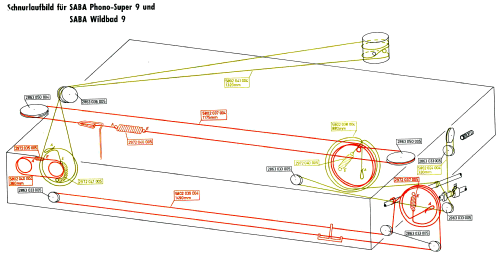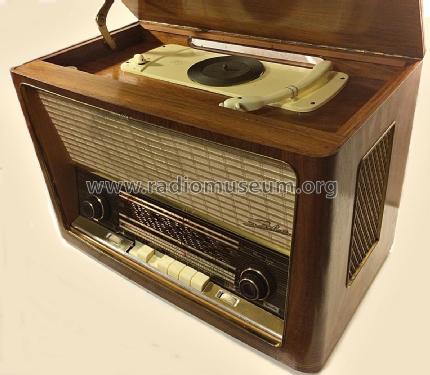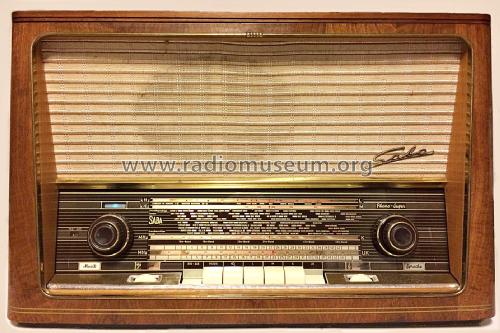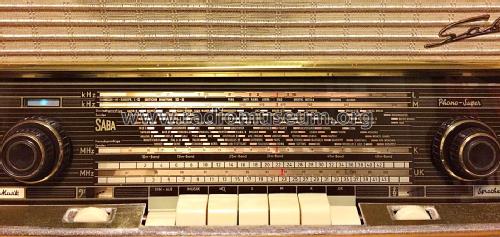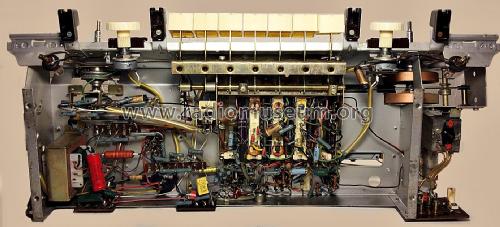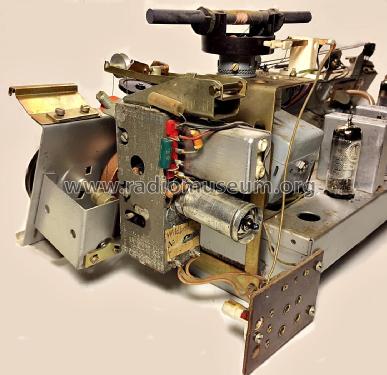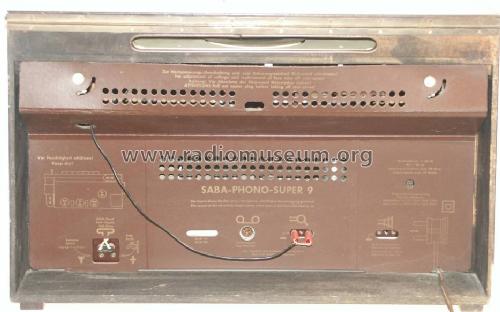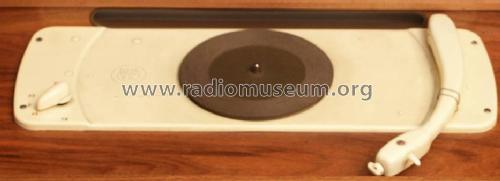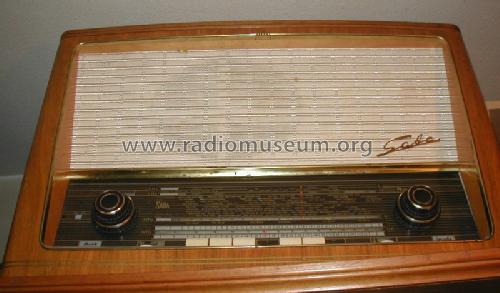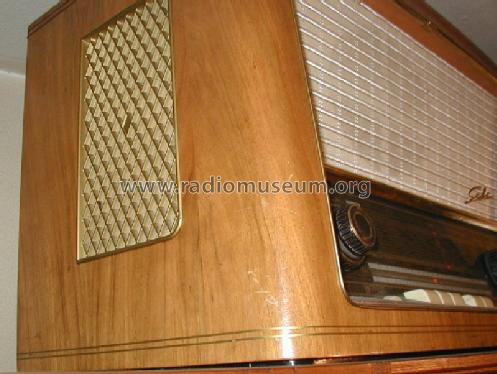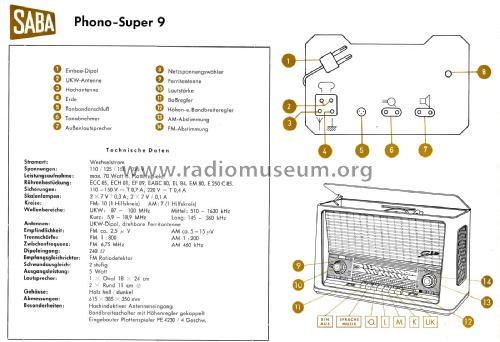Phono-Super 9
SABA; Villingen
- Hersteller / Marke
- SABA; Villingen
- Jahr
- 1958/1959
- Kategorie
- Rundfunkempfänger (Radio - oder Tuner nach WW2)
- Radiomuseum.org ID
- 72776
-
- Marke: Schwer & Söhne, GmbH
Klicken Sie auf den Schaltplanausschnitt, um diesen kostenlos als Dokument anzufordern.
- Anzahl Röhren
- 6
- Anzahl Transistoren
- Halbleiter
- E250C85
- Hauptprinzip
- Superhet allgemein; ZF/IF 460/6750 kHz
- Wellenbereiche
- Langwelle, Mittelwelle, Kurzwelle und UKW.
- Spezialitäten
- Plattenspieler (oder Wechsler)
- Betriebsart / Volt
- Wechselstromspeisung / 110; 125; 150; 220 Volt
- Lautsprecher
- 3 Lautsprecher
- Belastbarkeit / Leistung
- 5 W (Qualität unbekannt)
- Material
- Gerät mit Holzgehäuse
- von Radiomuseum.org
- Modell: Phono-Super 9 - SABA; Villingen
- Form
- Tischmodell, Zusatz nicht bekannt - allgemein.
- Bemerkung
-
Phono-Chassis = Perpetuum-Ebner: 4230PE.
- Datenherkunft
- -- Schematic
- Literaturnachweis
- -- Original-techn. papers. (Kundendienstschrift Rundfunkgeräte 1958/59)
- Autor
- Modellseite von Iven Müller angelegt. Siehe bei "Änderungsvorschlag" für weitere Mitarbeit.
- Weitere Modelle
-
Hier finden Sie 1650 Modelle, davon 1508 mit Bildern und 1189 mit Schaltbildern.
Alle gelisteten Radios usw. von SABA; Villingen
Sammlungen
Das Modell Phono-Super befindet sich in den Sammlungen folgender Mitglieder.
Forumsbeiträge zum Modell: SABA; Villingen: Phono-Super 9
Threads: 3 | Posts: 9
Dear RMorg members,
I am restoring a Saba Phono Super 9 radio and I have to replace the potentiometer of the bass tone control that of 3 + 3 MOhm Log that i never seen before, i do not know how it works and i did not found a description in the Web, also in the electric schema it is represented with a different symbol (photo attached).
I have done a lot of research on the web to find a potentiometer like that, but unfortunately I have only found logarithmic potentiometers of at most 1MOhms or linear ones of 2.5 or 5 MOhm that I do not know if they can fit anyway.
If someone could advise me where to buy such potentiometer, even second hand, or could give me some suggestion to try to repair the existing one, or alternatively find a solution to get around the problem, I would be very grateful.
Thank you in advance for the attention
Roberto
.jpg)
Roberto Licandro, 16.Sep.18
Hi Foley....It is a beautiful set! I had a similiar problem with a 1940's set. I used a dimmer switch for a lamp.It cut down my voltage , and in effect slowed the turntable motor. It worked well! I mounted it inside cabinet. Give it a try...let me know.....AL
Alfred Pugliese, 11.Apr.09
Hello all, this is my first post to the forum as I am a new member of radiomuseum.org. My first question has to do with one of my new addtions, the SABA Phono-Super 9. I just purchased this radio/phono from an individual in Germany in almost perfect condition. The radio portion is working fine, but the phonograph is spinning to fast. Everything appears to be fine on the inside, so I think this may have something to do with the 50hz/60hz differences between the US and EU.
I have tried to solve this problem and have asked a few people what they would do. One person said to change the value of the capacitor on the turntable motor. Another said the wiring from the turntable motor to the main power supply may need to be switched and another said that I may need a new spindle for the motor that would work here in the USA on 60hz.
The turntable is a Perpetuum-Ebner 4230 I believe.
Someone told me that these PE turntables run at 168 volts, in between the EU and USA voltage and the wires running from the turntable motor to the main power supply may need to be switched. Is this a 50hz motor? If so, I can see why it is running fast here in the US where we use 60hz. Most turntables that were sold in Europe utilize 50 hz motors and when they are used in the US run about 20% faster than they should. To solve this problem companies like Garrard and Thorens offered alternate motor spindles depending on where you were located and the power situation in that country.
Does anybody have any suggestions on how I can get this spinning slower so I can play my LP's at the right speed? Any assistance would be greatly appreciated. This is a great unit and I hope that there is a quick fix for this issue!
Thanks!
Foley
Edit 18-9-2018: Dead links to ebay removed
Foley Friedman, 11.Apr.09


